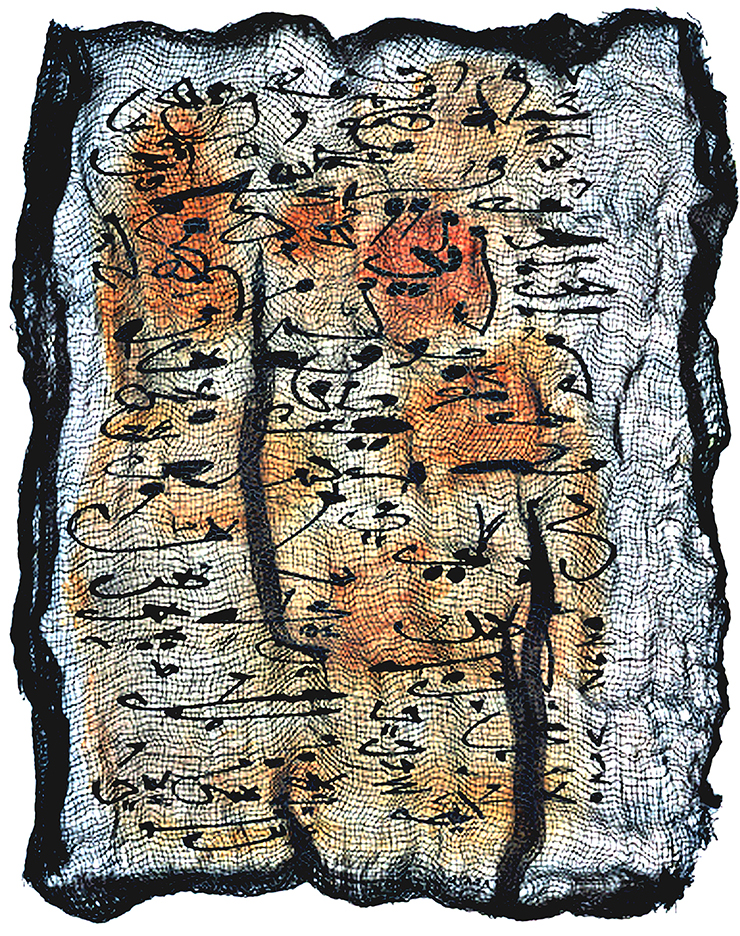
Maliheh Afnan: Selected works 1960–2006
14 – 29 July 2006
We strive to unveil the veiled, to see without hindrance, to know through sight, in what Coleridge described as the arrogant ‘despotism of the eye’. What we do manage to see is veiled over by falsehood. We mistake prejudice for truth.
Afnan’s veil is a question mark. What does it cover – a man’s mind, a woman’s body, the spirit of both? Where is the great chasm between the veiled and the unveiled? …The veil is all we see. – Rana Kabbani, 2006.
The work of Maliheh Afnan absorbs and transcends cultural references: born in Palestine of Persian parents, educated in Beirut and Washington, Afnan lived in Paris for more than twenty years before moving to London in 1997. Her work is represented in the Institute du Monde Arabe in Paris, and in the British Museum in London where she is currently showing in the exhibition Word into Art: Artists of the Modern Middle East.
Maliheh Afnan has travelled extensively in America, the Middle East and Europe. Her work has been described as appearing “as a relic of an older civilization or an archaeological excavation into the collective psyche… The delicacy of Persian miniatures and manuscripts, which she remembers from childhood, is mirrored in her love for intimate scale and the refined beauty of muted colour.”
Calligraphy plays an important role: images appear that suggest the written word. Her works on paper and her tablets of painted plaster are reminiscent of ancient, almost obliterated texts, and like palimpsests, retain only some vestige of literal meaning and an impression of human contact.
Her recent Veiled series of works use delicate layers of painted gauze over her written calligraphy, not referring to veiled women in the Middle East, but instead producing works that evoke “veiled emotions, veiled threats, veiled feelings”.
Afnan has engaged with both Middle Eastern and Western influences. She has looked towards such artists as Pollock, Rothko, Dubuffet and Klee, and shares an affinity with the American artist Mark Tobey who helped to arrange her first European exhibition in 1971. She says that “my work is rooted in memory, both my own and a more distant, perhaps collective one. I unconsciously but continually refer to places, scripts, faces from the past both real and imagined… on a sheet of paper placed flat on my work-table, I start with a line. That line leads one on, taking a life of its own, making me a mere instrument of its journey.
“Often the source of these lines stem from scripts – scripts of all kinds, even invented ones… At times landscapes emerge instead, or faces. In a way I find I ‘write’ my painting. I add pigment, layer over layer, which I rub in with my fingers, working it until it assumes its patina. If all of one’s life is registered in the recesses of the unconscious, then one’s work might simply be an unravelling, filtered and transformed through time and the need to give it form… the process eludes me, and retains its mystery.”
